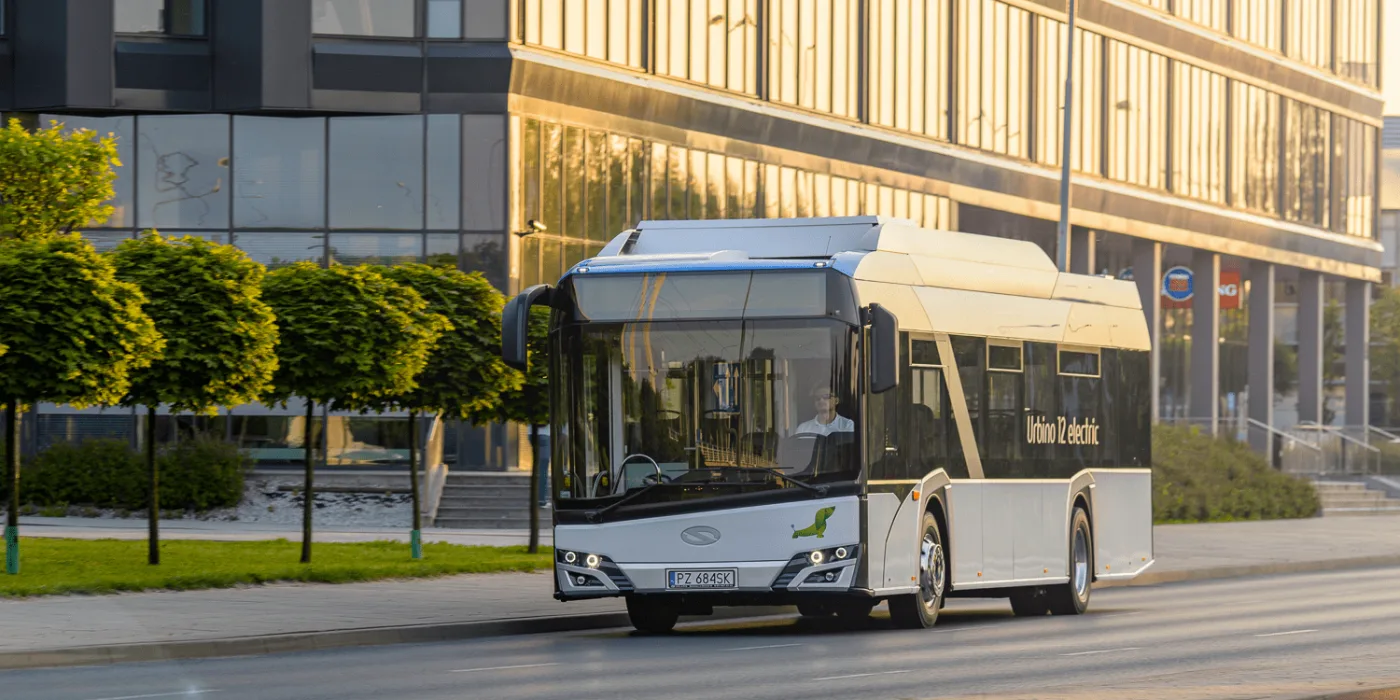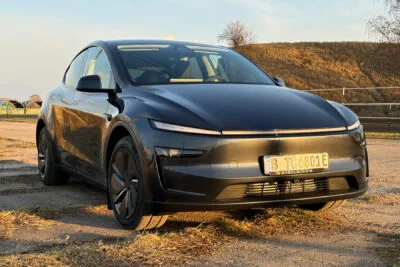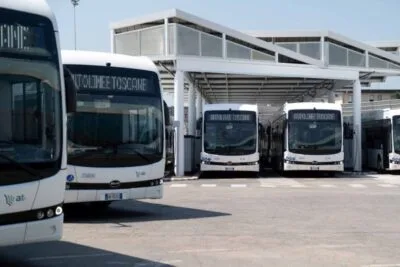What’s driving the electric bus boom in Poland?
More than every third electric bus in the EU was built in Poland. The strength of the industry is based not only on the domestic manufacturer Solaris – but also on the constantly high demand domestically, as Aleksandra Fedorska reports in her analysis.
***
The bad air in many Polish cities has meant that domestic demand has been high for years. Now, the interest in the rest of Europe is also showing a significant increase. Over the last few years, Poland has developed into one of the leading manufacturers of electric buses on the continent. Only recently, a pantograph charging station for electric buses with up to 540 kW was put into operation in the Polish city of Poznań (Poznan). This flagship project is part of a booming development of the electric bus industry. Particularly successful is the Polish company Solaris, which produces electric buses near Poznań and now wins around a quarter of all tenders in Europe.
But other companies, such as Volvo, also rely on locations in Poland for the development and manufacture of electric buses. Ulf Magnusson, Managing Director of Volvo Polska, explains the positive market development with the presence of the most important local bus manufacturers and the strong demand for low-emission buses in the Polish cities affected by smog. Added to this are the good financial possibilities of the local transport companies, which will be able to renew their outdated fleets not only through increasing revenues but also through additional EU funding. This applies, for example, to Lublin. Located in the east of the country and with over 320,000 inhabitants, the city acquired 20 Solaris electric buses and the necessary charging infrastructure from Solaris for 62 million Złoty, which corresponds to around 15 million euros.
The Polish Statistical Office announced for 2018 that the share of electric buses manufactured in Poland this year accounted for 36 per cent of sales in the EU. Sales in Poland are expected to increase further in the coming years, as 62 local authorities have currently expressed interest in climate-friendly vehicles for public passenger transport. The high level of air pollution in Polish cities is forcing the public sector to make further investments in environmentally and climate-friendly transport solutions. The Polish Industrial Development Agency (ARP) estimates that 800 electric buses will be needed in the coming years.
Solaris wants to profit from the Polish electric bus boom
Solaris is also expected to benefit disproportionately from this growing demand. Current orders from Poznań, Warszawa (Warsaw), Lublin but also Berlin and Milan have shown that Solaris electric buses are particularly in demand in large cities. According to its own information, the Polish company has already sold more than 300 electric buses in the current year.
Solaris has been relying on electric drives since 2001. At that time, the company sold its Trollino trolleybuses primarily to Polish and Eastern European customers. The success of the battery-powered “Urbino electric” bus, which emerged from the low-floor “Urbino” city bus model built in 1999, began in 2011. Today it is the company’s best-selling model.
Bus operators demand individually adapted vehicles
Thanks to its experience in the design of electric buses, Solaris has now designed the Urbino electric to be highly variable in terms of battery, charging options, the number of units and bus length. This flexibility is particularly advantageous for tenders in large cities, as it allows Solaris to adapt individually to the requirements of each metropolis and to offer equipment that best takes into account the traffic conditions prevailing in the cities. “The bus industry today requires manufacturers to be highly adaptable to technical requirements and the quantities required,” says Mateusz Figaszewski, Head of E-Mobility Development at Solaris.
In Germany, Berlin’s public transport operator (BVG), which have had the Urbino electric in their fleet since January 2019, also want to take advantage of these advantages. BVG ordered buses with a “High Power” battery instead of the latest “High Energy+” model. Although this will not achieve a range of 200 kilometres, the articulated buses can be charged using the pantograph charging infrastructure and plug-in charging stations on the factory premises.
The city of Poznań has been playing the role of the avant-garde in e-mobility for years with the city’s public transport operators (MPK) and has incorporated this aspect into the city’s marketing concept. “We have made it our goal to be the first to offer climate-friendly and environmentally friendly transport solutions. We were the first city in Poland and the ninth in Europe to purchase a hybrid-powered city bus in 2008 to transport the guests of the UN climate conference in our city,” says the MPK press spokeswoman. With the new electric buses and pantograph fast chargers, the change in Poznań will now become even clearer than with the hybrid buses. A visible sign that things are moving forward.
About the author
Aleksandra Fedorska is a Polish-German political scientist and publicist. She works as a correspondent for Polish and German media in the fields of energy policy and e-mobility. Fedorska lives and works in Jagel in Schleswig-Holstein and in the Polish city of Poznań.
Original article by Aleksandra Fedorska translated by Chris Randall





0 Comments